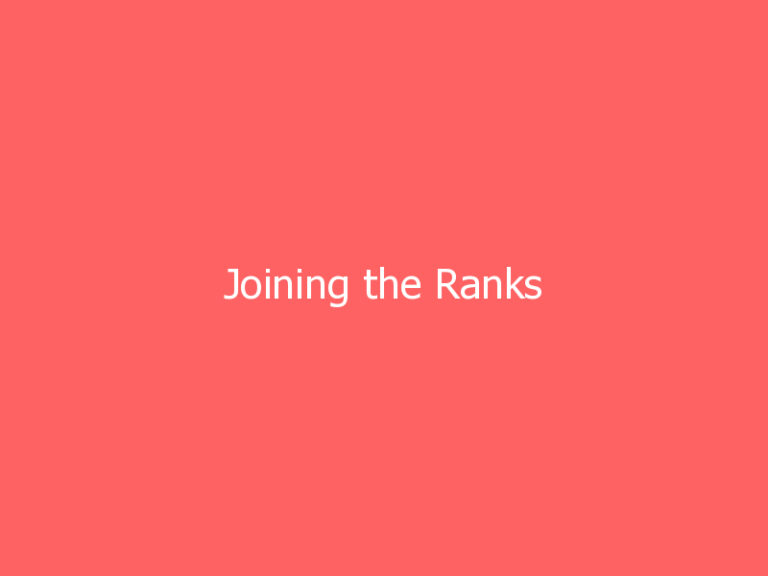As small businesses seek to access the newly authorized $284 billion in PPP funds, they should draw upon the lessons learned from the first round of PPP loans in 2020.
The post Small Business Access to PPP Loans: Study Shows Strong Networks, Business Relationships Key to Success appeared first on AllBusiness.com. Click for more information about Neil Hare. Copyright 2020 by AllBusiness.com. All rights reserved. The content and images contained in this RSS feed may only be used through an RSS reader and may not be reproduced on another website without the express written permission of the owner of AllBusiness.com.
By Neil Hare and Mark Madrid
As small businesses seek to access the newly authorized $284 billion in the Paycheck Protection Program (PPP), they should draw upon the lessons learned and the many positive stories that emerged through the first round of PPP in 2020. The main lesson is that the small businesses that successfully secured and got access to PPP loans leveraged strong resource networks, and were better prepared to apply, receive, and track loans, and request complete forgiveness. The good news is that these networks are accessible for all small businesses.
While the design and execution of PPP certainly had its problems, it largely accomplished what it set out to do: deploy funds to businesses with less than 500 employees for the purpose of keeping those employees on the payroll for an eight-week period. In March 2020, when Congress passed the Coronavirus Aid, Relief, and Economic Security Act or CARES Act which authorized the PPP program, the federal government estimated the Covid-related shutdown would be for only two months–wishful thinking. When PPP closed on August 8, 2020, 5.2 million loans had been issued for an estimated $525 billion with notably $130 billion still left in the program.
Aside from PPP’s flaws, what it exposed, however, was that businesses that were prepared to document their payroll, revenue, and expenses, and that had pre-existing, personal relationships with lawyers, accountants, and bankers, applied and received the money; businesses that did not, largely didn’t even apply. And, like many factors in this pandemic, women- and minority- owned businesses, and those in economically disadvantaged areas, were the least networked and prepared and, therefore, received PPP funding in disproportionately low numbers.
Critical research on U.S. Latino-owned businesses
This fact was documented in a research brief funded by Latino Business Action Network (LBAN) and conducted by the Stanford Latino Entrepreneurship Initiative (SLEI) at Stanford Graduate School of Business. LBAN fosters growth and scale among Latinx entrepreneurs through research, education, and development of a national ecosystem–providing both with “what you should know” and “whom you should know.” The research surveyed 7,000 (total) Latino-owned businesses (LOBs) and white-owned businesses (WOBs), with at least one employee, regarding the impact of Covid on their businesses and their ability to access PPP funds.
Most of the findings on how the two groups thought about the pandemic at its onset last March were not surprising. Both groups, in roughly equal numbers, predicted that Covid would lead to revenue decline, business closures, a decrease in productivity, layoffs, and supply chain shortfalls. An almost identical number, 82% of LOBs and 81% of WOBs, said they were negatively impacted by the Covid-19 pandemic, and an identical number (33%) of both groups applied for PPP loans.
Related Articles From AllBusiness.com:
- Trump Finally Signs the Relief Act–10 Important Things You Need to Know
- 5 Ways the New Stimulus Bill May Help Your Small Business
- 5 Expert Career Tips from a Minority Woman Executive in Tech
- The State of Minority-Owned Businesses: African American Entrepreneurs
When it came to barriers to access PPP funding, a comparable number of LOBs and WOBs claimed the lack of a banking relationship and technical issues, such as trouble with submitting documents via websites. The gap widened when it came to lack of guidance on how to apply (45% of LOBs versus 37% of WOBs), and lack of required application materials (22% of LOBs over 15% of WOBs). Despite these relative similarities, however, WOBs were able to overcome these difficulties to receive PPP loans at over double the rate of LOBs.
Next, the study looked at scaled businesses, those defined as having at least $1 million in annual gross revenue, that applied for PPP loans. In this group, the gap was widest with 54% of WOBs reporting they received all PPP funding applied for versus only 20% of LOBs.
The real eye-opener, however, was when the study layered scaled LOBs who had graduated from the Stanford Latino Entrepreneurship Initiative Education-Scaling Program over the other two groups in terms of applying and receiving access to PPP loans. An overwhelming 82% of this group received PPP loans versus 18% of scaled LOBs and 28% of scaled WOBs.
Peer-to-peer and resource networks increase access to PPP loans
A key focus of the Stanford Latino scaling program is to empower businesses to scale through the powerful networks created around the program. The SLEI research shows that businesses, Latinx or otherwise, that are part of established networks are more resilient in times of crisis like with Covid, as they have the trusted contacts and resources necessary to survive. To further document this fact, it is helpful to look back on the requirements of the PPP program–largely the same for the newly passed PPP relief law–and how an established network was critical to applying and receiving funds.
Since the PPP was intended to keep employees on the payroll for roughly two months, the loan amount was calculated by documenting one month of payroll in 2019 multiplied by 2.5; borrowers would apply for this amount through a lender. Then, in order for borrowers to apply for and receive forgiveness, which would turn the loan into a grant, they would need to use at least 60% of that money for payroll and the remainder for a limited number of expenses: rent, utilities, mortgages, and interest on existing debt. Borrowers needed to track the appropriate use of this money over eight to 24 weeks, and then they could apply for forgiveness.
Applicants, including sole proprietors and independent contractors, were required to provide documentation to their lender on their 2019 payroll, profit and loss and bank statements, and two years of tax returns. This is what caused the widespread deviation among businesses that were able to quickly and confidently apply and receive access to PPP loans, track them efficiently, and apply for forgiveness without fear of acquiring unwanted debt. Businesses that were not prepared and unclear on the regulations feared not just acquiring debt, but incurring civil or perhaps criminal penalties for misleading the government through inaccurate reporting on applications.
Establish banking, accounting, legal and payroll relationships
We recommend for all business, scaled or not, to establish the following relationships to avail themselves of the new PPP program and to ensure resiliency in the future:
Banking relationship
Businesses that had a personal relationship with someone at their bank were able to understand the program and what documentation was necessary. In many cases, that relationship meant expediting applications to the SBA and obtaining a loan number in a matter of hours. This was especially important in the first round, when money did run out and quickly.
It was and remains clear that most business owners do not have such a personal relationship. Businesses that did not have relationships were relegated to long wait times on customer service lines, confusion, delayed applications, missed deadlines, and, for many, the decision not to apply. The lack of a banking relationship was even greater in minority communities that are unbanked, underbanked, or have a history of distrust with bankers.
Accounting and legal relationships
Many small businesses were not current on their tax returns, with some several years behind. For many this made applying for PPP loans impossible or very difficult, as documenting 2019 income and expenses was burdensome. Most small businesses do not have internal bookkeepers, accounting software, financial managers, or CPAs at their disposal. Likewise, most small businesses do not have access to a lawyer to advise them on the legal parameters around PPP.
Payroll provider relationship
Those businesses that run payroll through a payroll provider were quickly and easily able to document one month of 2019 payroll when applying for access to PPP loans, and can now easily document use of PPP funds through reports designed especially for the forgiveness process. Of course, for many small businesses, sole proprietors and independent contractors, payroll is not run through a provider, making documenting payroll cumbersome, difficult, and time-consuming.
Better Access to PPP Loans: Lessons learned
The ongoing Covid-19 pandemic did bring some good news stories and important lessons. For small businesses, the main lesson is access to trusted networks to answer questions in real time; commiserate; refer accountants, lawyers, and bankers; and provide moral support–makes all the difference for surviving, persisting, and thriving.
The good news is these networks exist already, and every business, whether minority-owned, women-owned, or white-owned, should make their first decision of 2021 to take advantage of the services they offer. These networks include influential organizations like LBAN, chambers of commerce, trade associations, Women’s Business Centers, SCORE, and Small Business Development Centers.
The new PPP loans and other relief programs will remain complex, with new regulations changing the game on a regular basis, making these networks more important than ever. The time is now for the American business community to work together to provide real-time solutions to help our small businesses battle through the Covid-19 pandemic, and emerge on the other side stronger than ever.
RELATED: New Guidance Issued on Next Round of PPP Loans: An Overview for Small Businesses
About the Authors
Neil Hare, an attorney and President of Global Vision Communications, specializes in small business policy and advocacy. Follow him on Twitter @nehare and LinkedIn.
Mark Madrid is the Chief Executive Officer of the Latino Business Action Network, and a national champion of the Latinx business community in the United States and Puerto Rico. Follow him on Twitter @madridinspire and LinkedIn.
SLEI (Stanford Latino Entrepreneurship Initiative) is a research and education collaboration between Stanford University and the Latino Business Action Network.
The post Small Business Access to PPP Loans: Study Shows Strong Networks, Business Relationships Key to Success appeared first on AllBusiness.com. Click for more information about Neil Hare. Copyright 2020 by AllBusiness.com. All rights reserved. The content and images contained in this RSS feed may only be used through an RSS reader and may not be reproduced on another website without the express written permission of the owner of AllBusiness.com.
FeedzyRead More
Full content below:


By Neil Hare and Mark Madrid
As small businesses seek to access the newly authorized $284 billion in the Paycheck Protection Program (PPP), they should draw upon the lessons learned and the many positive stories that emerged through the first round of PPP in 2020. The main lesson is that the small businesses that successfully secured and got access to PPP loans leveraged strong resource networks, and were better prepared to apply, receive, and track loans, and request complete forgiveness. The good news is that these networks are accessible for all small businesses.
While the design and execution of PPP certainly had its problems, it largely accomplished what it set out to do: deploy funds to businesses with less than 500 employees for the purpose of keeping those employees on the payroll for an eight-week period. In March 2020, when Congress passed the Coronavirus Aid, Relief, and Economic Security Act or CARES Act which authorized the PPP program, the federal government estimated the Covid-related shutdown would be for only two months–wishful thinking. When PPP closed on August 8, 2020, 5.2 million loans had been issued for an estimated $525 billion with notably $130 billion still left in the program.
Aside from PPP’s flaws, what it exposed, however, was that businesses that were prepared to document their payroll, revenue, and expenses, and that had pre-existing, personal relationships with lawyers, accountants, and bankers, applied and received the money; businesses that did not, largely didn’t even apply. And, like many factors in this pandemic, women- and minority- owned businesses, and those in economically disadvantaged areas, were the least networked and prepared and, therefore, received PPP funding in disproportionately low numbers.
Critical research on U.S. Latino-owned businesses
This fact was documented in a research brief funded by Latino Business Action Network (LBAN) and conducted by the Stanford Latino Entrepreneurship Initiative (SLEI) at Stanford Graduate School of Business. LBAN fosters growth and scale among Latinx entrepreneurs through research, education, and development of a national ecosystem–providing both with “what you should know” and “whom you should know.” The research surveyed 7,000 (total) Latino-owned businesses (LOBs) and white-owned businesses (WOBs), with at least one employee, regarding the impact of Covid on their businesses and their ability to access PPP funds.
Most of the findings on how the two groups thought about the pandemic at its onset last March were not surprising. Both groups, in roughly equal numbers, predicted that Covid would lead to revenue decline, business closures, a decrease in productivity, layoffs, and supply chain shortfalls. An almost identical number, 82% of LOBs and 81% of WOBs, said they were negatively impacted by the Covid-19 pandemic, and an identical number (33%) of both groups applied for PPP loans.
Related Articles From AllBusiness.com:
When it came to barriers to access PPP funding, a comparable number of LOBs and WOBs claimed the lack of a banking relationship and technical issues, such as trouble with submitting documents via websites. The gap widened when it came to lack of guidance on how to apply (45% of LOBs versus 37% of WOBs), and lack of required application materials (22% of LOBs over 15% of WOBs). Despite these relative similarities, however, WOBs were able to overcome these difficulties to receive PPP loans at over double the rate of LOBs.
Next, the study looked at scaled businesses, those defined as having at least $1 million in annual gross revenue, that applied for PPP loans. In this group, the gap was widest with 54% of WOBs reporting they received all PPP funding applied for versus only 20% of LOBs.
The real eye-opener, however, was when the study layered scaled LOBs who had graduated from the Stanford Latino Entrepreneurship Initiative Education-Scaling Program over the other two groups in terms of applying and receiving access to PPP loans. An overwhelming 82% of this group received PPP loans versus 18% of scaled LOBs and 28% of scaled WOBs.
Peer-to-peer and resource networks increase access to PPP loans
A key focus of the Stanford Latino scaling program is to empower businesses to scale through the powerful networks created around the program. The SLEI research shows that businesses, Latinx or otherwise, that are part of established networks are more resilient in times of crisis like with Covid, as they have the trusted contacts and resources necessary to survive. To further document this fact, it is helpful to look back on the requirements of the PPP program–largely the same for the newly passed PPP relief law–and how an established network was critical to applying and receiving funds.
Since the PPP was intended to keep employees on the payroll for roughly two months, the loan amount was calculated by documenting one month of payroll in 2019 multiplied by 2.5; borrowers would apply for this amount through a lender. Then, in order for borrowers to apply for and receive forgiveness, which would turn the loan into a grant, they would need to use at least 60% of that money for payroll and the remainder for a limited number of expenses: rent, utilities, mortgages, and interest on existing debt. Borrowers needed to track the appropriate use of this money over eight to 24 weeks, and then they could apply for forgiveness.
Applicants, including sole proprietors and independent contractors, were required to provide documentation to their lender on their 2019 payroll, profit and loss and bank statements, and two years of tax returns. This is what caused the widespread deviation among businesses that were able to quickly and confidently apply and receive access to PPP loans, track them efficiently, and apply for forgiveness without fear of acquiring unwanted debt. Businesses that were not prepared and unclear on the regulations feared not just acquiring debt, but incurring civil or perhaps criminal penalties for misleading the government through inaccurate reporting on applications.
Establish banking, accounting, legal and payroll relationships
We recommend for all business, scaled or not, to establish the following relationships to avail themselves of the new PPP program and to ensure resiliency in the future:
Banking relationship
Businesses that had a personal relationship with someone at their bank were able to understand the program and what documentation was necessary. In many cases, that relationship meant expediting applications to the SBA and obtaining a loan number in a matter of hours. This was especially important in the first round, when money did run out and quickly.
It was and remains clear that most business owners do not have such a personal relationship. Businesses that did not have relationships were relegated to long wait times on customer service lines, confusion, delayed applications, missed deadlines, and, for many, the decision not to apply. The lack of a banking relationship was even greater in minority communities that are unbanked, underbanked, or have a history of distrust with bankers.
Accounting and legal relationships
Many small businesses were not current on their tax returns, with some several years behind. For many this made applying for PPP loans impossible or very difficult, as documenting 2019 income and expenses was burdensome. Most small businesses do not have internal bookkeepers, accounting software, financial managers, or CPAs at their disposal. Likewise, most small businesses do not have access to a lawyer to advise them on the legal parameters around PPP.
Payroll provider relationship
Those businesses that run payroll through a payroll provider were quickly and easily able to document one month of 2019 payroll when applying for access to PPP loans, and can now easily document use of PPP funds through reports designed especially for the forgiveness process. Of course, for many small businesses, sole proprietors and independent contractors, payroll is not run through a provider, making documenting payroll cumbersome, difficult, and time-consuming.
Better Access to PPP Loans: Lessons learned
The ongoing Covid-19 pandemic did bring some good news stories and important lessons. For small businesses, the main lesson is access to trusted networks to answer questions in real time; commiserate; refer accountants, lawyers, and bankers; and provide moral support–makes all the difference for surviving, persisting, and thriving.
The good news is these networks exist already, and every business, whether minority-owned, women-owned, or white-owned, should make their first decision of 2021 to take advantage of the services they offer. These networks include influential organizations like LBAN, chambers of commerce, trade associations, Women’s Business Centers, SCORE, and Small Business Development Centers.
The new PPP loans and other relief programs will remain complex, with new regulations changing the game on a regular basis, making these networks more important than ever. The time is now for the American business community to work together to provide real-time solutions to help our small businesses battle through the Covid-19 pandemic, and emerge on the other side stronger than ever.
RELATED: New Guidance Issued on Next Round of PPP Loans: An Overview for Small Businesses
About the Authors
Neil Hare, an attorney and President of Global Vision Communications, specializes in small business policy and advocacy. Follow him on Twitter @nehare and LinkedIn.
Mark Madrid is the Chief Executive Officer of the Latino Business Action Network, and a national champion of the Latinx business community in the United States and Puerto Rico. Follow him on Twitter @madridinspire and LinkedIn.
SLEI (Stanford Latino Entrepreneurship Initiative) is a research and education collaboration between Stanford University and the Latino Business Action Network.








